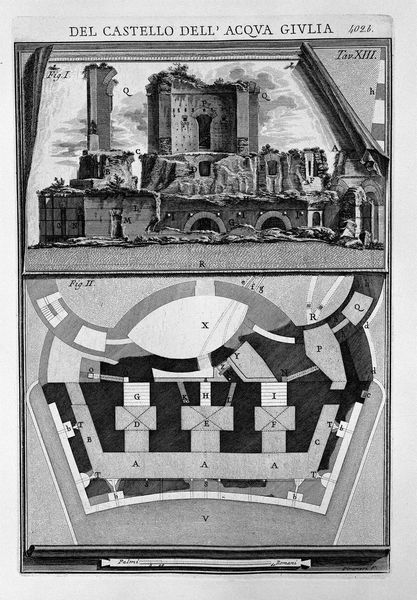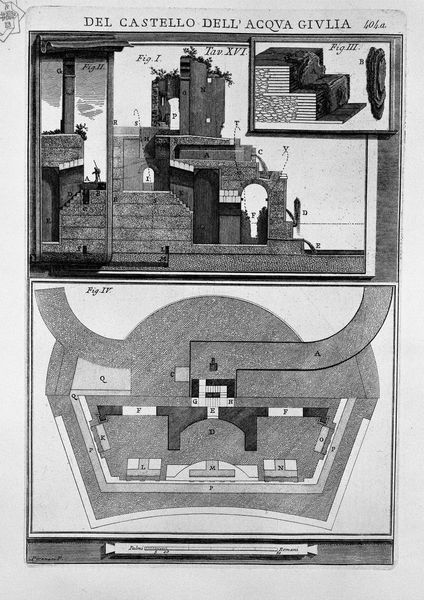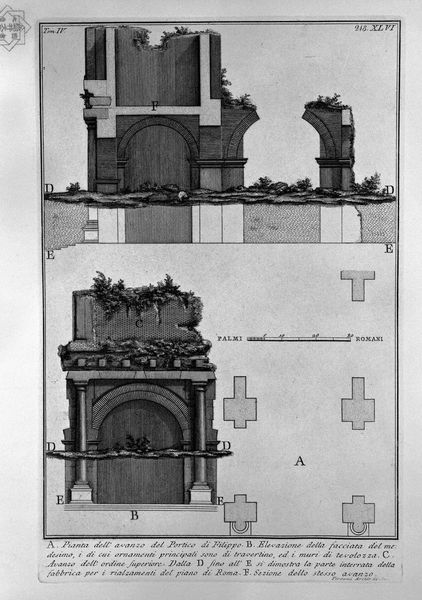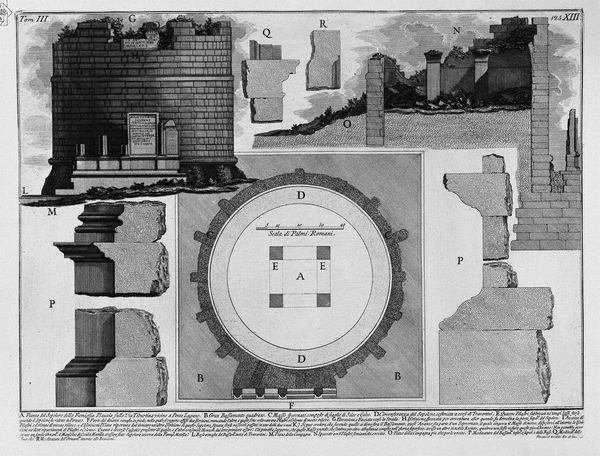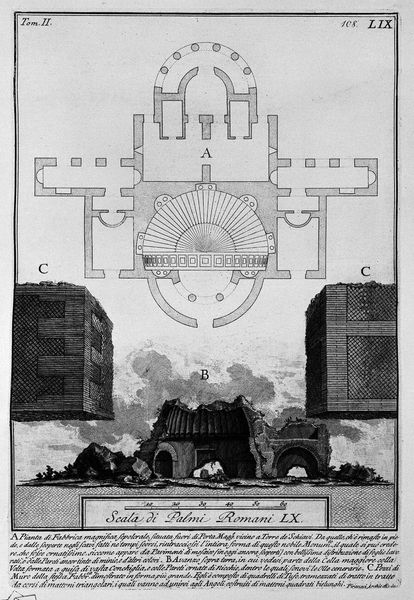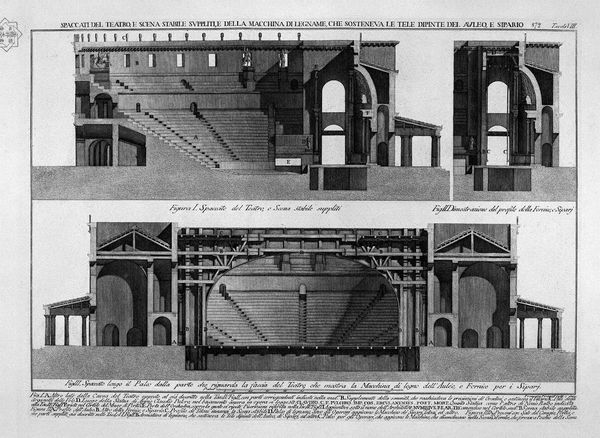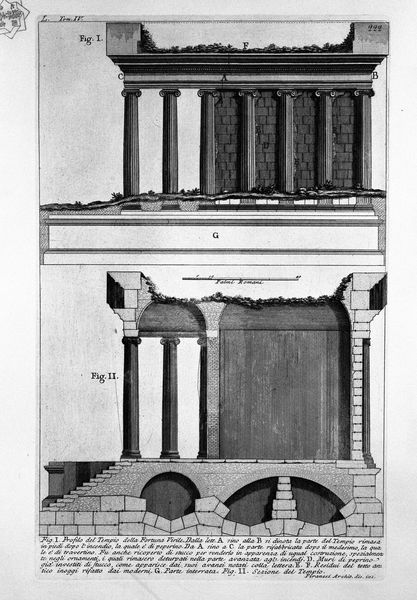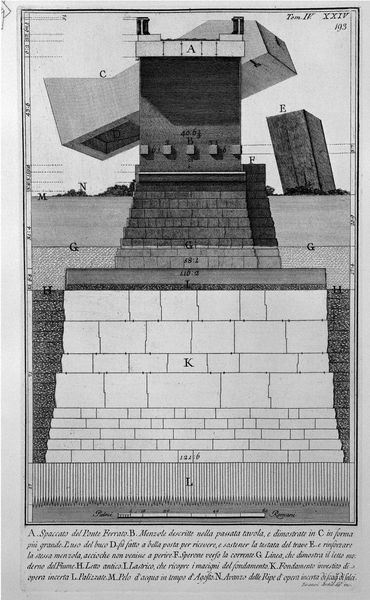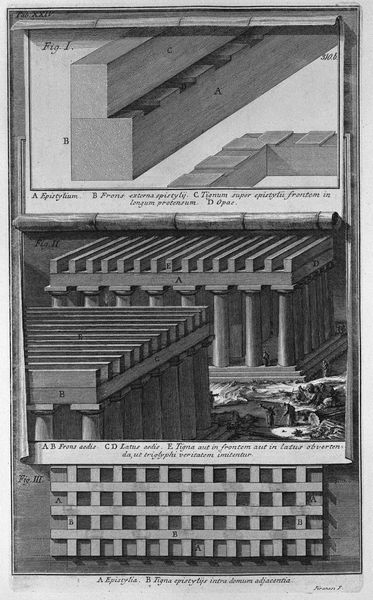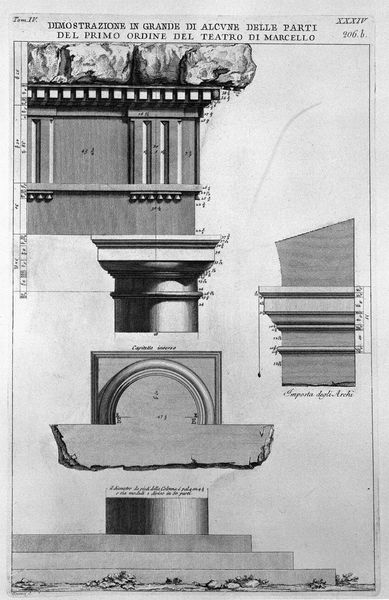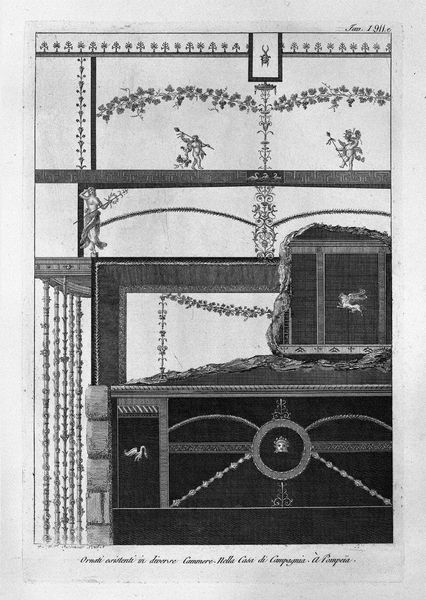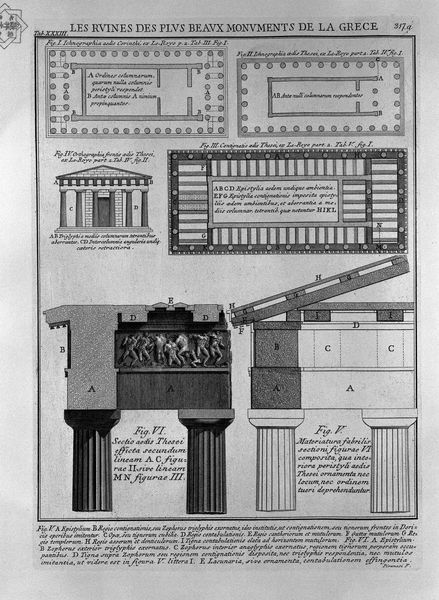
drawing, print, etching, architecture
#
drawing
#
neoclacissism
# print
#
etching
#
landscape
#
geometric
#
cityscape
#
architecture
Copyright: Public domain
Curator: I find myself lost in the stark geometry and precision of this etching. There's something inherently captivating about mapping and measuring the world, isn't there? Editor: It is striking. It reminds me of stagecraft—the black and white rendering giving it that kind of blueprint theatrical vibe. You're about to raise the curtain on a long-lost performance. Curator: Exactly. This detailed work is titled "Plan and vertical sections of the castle" by Giovanni Battista Piranesi. It is, in fact, an exploration of architectural space. Piranesi, of course, deeply influenced Neoclassicism and Romanticism. Editor: So it’s more than just dry documentation. I see dramatic potential. You've got those stark chambers laid bare... ready for a tragic plot to unfold within the foundation of its walls. What statement was Piranesi hoping to make with this etching? Curator: Piranesi often blurred the lines between reality and vision. He aimed to investigate the enduring power of ancient Roman architecture, and Rome’s influence and continuity through time. His “Plans” suggest how buildings and structures evolve within cities, shaping not just space but societal and political dynamics. Editor: Right, he’s making old bones beautiful again, with a twist! I’m drawn to the cross-section, it is so precise and deliberate. The shadows are a nice touch—deep pools that give scale to a vast space beneath the stage. Curator: The play of light and shadow emphasizes form, indeed, reflecting his profound knowledge of Roman construction and his belief that these architectural forms embodied ideals of order and power. This speaks directly to Neoclassicism’s core themes. Editor: So we’re talking about idealized forms intended to inspire awe… it's interesting to note what happens when the human element is gone, it takes on a somber atmosphere, something almost otherworldly. Curator: Definitely otherworldly—it presents how buildings can reflect and affect people’s sense of civic identity. His skill turned architecture into grand public narratives, which would shape attitudes in an emerging Europe. Editor: What I’m getting is the tension, how humans interact, influence, and are affected by architecture itself, which, from what I can tell in this composition, may feel isolated when void of people. It is a visual dance! Curator: Ultimately, that interaction defined civilization itself for Piranesi— and what he captured continues to prompt a lot of rich thoughts! Editor: For me too! That dark romantic twist got my attention, that contrast! Now excuse me, I have some play scripts I need to dig through.
Comments
No comments
Be the first to comment and join the conversation on the ultimate creative platform.
